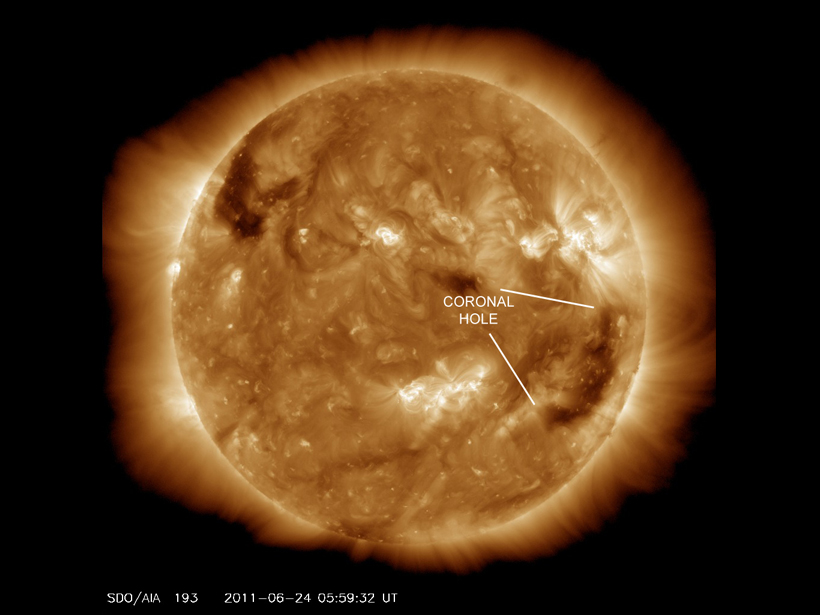Source: Space Weather
In the early 1970s, Apollo astronauts employed X-ray telescopes on board Skylab to continuously track coronal holes on our Sun for the first time. Their images showed dark areas with unusually low temperatures and densities where our star’s magnetic field reached out into space instead of looping back, allowing particles to stream out from the Sun. During most of the 11-year solar cycle, these holes only cover the Sun’s polar caps, but in active periods, the holes can exist anywhere.
Two decades of observations built on the Skylab results, and in 1990, that research allowed astronomers from the Naval Research Laboratory to tie solar wind speed to the expansion factor of the Sun’s magnetic field lines. This model, first suggested by Wang and Sheeley, still underpins space weather forecasts today, helping the National Oceanic and Atmospheric Administration predict background solar wind speeds and Earth’s magnetic field.
Now Riley et al. suggest that models have evolved so much that the expansion factor underlying the 25-year-old observed relationship might no longer be needed. Instead, the authors suggest that solar wind speed might be dependent on the distance from the coronal hole boundary.
The team compared predictions they made using the original relationship to a new version of the model that calculates solar wind speed by measuring the perpendicular distance to the coronal hole boundary. The model also maps solar wind trajectories out from the Sun’s visible surface to the edge of its corona—the Sun’s outer atmosphere—and even out to Earth.
Their technique showed better agreement between observations and models than with the original relationship alone. The team also suggests that by studying various predictions made by each model, scientists might be able to better understand the origin of the solar wind itself. (Space Weather, doi:10.1002/2014SW001144, 2015)
—Eric Betz, Freelance Writer
Citation: Betz, E. (2015), Refining solar wind models to better predict space weather, Eos, 96, doi:10.1029/2015EO034779. Published on 2 September 2015.
Text © 2015. The authors. CC BY-NC 3.0
Except where otherwise noted, images are subject to copyright. Any reuse without express permission from the copyright owner is prohibited.

